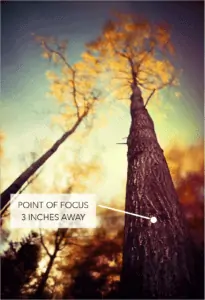Strengthening Camera Stability for Rock-Solid Brackets
Strengthening Camera Stability for Rock-Solid Brackets
The smallest amount of prevention can save you much frustration during the exposure blending process….and it all starts with camera stability.
Blurry photos with soft focus and/or an inconsistent depth of field can completely derail your blending workflow, causing you to lose out on a potentially extraordinary landscape photograph. Since you’re blending multiple exposures together of the same scene, it’s necessary to have each exposure align perfectly in order to combine them without errors…such as ghosting or soft focus.
The key to perfect alignment is (1) a solid mount for your camera and (2) the prevention of any vibrations….because even the most minor movement can slightly alter your composition or soften your focus, which can create a major obstacle once you bring your brackets into Photoshop.
In this article, I’ll go over my best techniques for ensuring that your camera mount is rock solid, and also how to head off any potential causes for camera shake….so you can easily blend exposures together and create seamless HDR landscapes like this:
Let’s start by going over why your tripod is so important for auto-bracketing, and how to make sure that nothing can interfere with your stability.
Why you always need a tripod when bracketing.
While you can certainly capture your scene handheld (if you have enough light), a stable camera mount is almost mandatory for bracketing. When you bracket a scene, it’s of the utmost importance that each image will align perfectly when you blend them together later in the digital darkroom.
A stable tripod will ensure that your camera can not move, and that each exposure you photograph will be identical in composition as even the most minor movement can produce errors in blending.
Composition aside, a tripod will eliminate any chance of soft focus due to camera shake, allowing you to concentrate more on fine-tuning composition instead of worrying about keeping your arms steady.
While your initial metering may produce a shutter speed fast enough to use handheld, your longest exposure (metered for your shadow detail) may be on the cusp of that limit…and could produce soft focus for that bracket without you even realizing it.
This is especially true for landscape photography where you’ll typically be using a small aperture for a deep depth of field, be in an environment with limited available light, and be working with a wide range of exposure values to capture all of your tones.
Instead of finding this out after you begin your bracketing – or even worse, once you get home and look at your brackets in greater detail – it’s far easier to prevent this in the field by using a stable camera mount…giving you more time to enjoy your photography.
1. A tripod gives you a more secure way to line up your shot.
I’ve learned that you can never trust handheld compositions fully. When I’m shooting in awkward positions (especially down low or laying flat out) what I see in my viewfinder isn’t always what appears on my computer later. Using a tripod gives you stability, which helps you slow down and check those important compositional elements, such as using the rule of thirds or straightening out your horizon…and making sure that everything you want within your frame is there.
Without a tripod, I would have had a very difficult time trying to line up this composition and adjust my settings as I was laying flat out on my stomach for this perspective.
Also, a tripod allows you to check your histogram and adjust your settings without affecting your perspective or composition….very helpful!
2. A tripod helps you to pinpoint your focus.
Slight movements from a freehand grip can lead to focusing problems, especially if you’re working with a shallow depth of field. Any kind of vibration or movement can throw off your focus and alter your depth, which makes exposure blending near impossible.
A tripod helps tremendously by giving you the opportunity to check and re-check your focus (I’m a big advocate of chimping or using live view to confirm proper focus) and other settings without inadvertently moving your camera.
If your focus isn’t where you want it to be, you can fine-tune it manually…which is much easier to do if your camera is stationed on a tripod.
3. A tripod helps with proper image alignment for processing.
You’ll appreciate the added stability of a tripod if you’re auto-bracketing for exposure blending, or shooting a panorama.
When you photograph an image handheld, even the slightest movement can cause minor discrepancies between each frame….which makes it very difficult to align images in the process later for blending or stitching.
For this image, a tripod was necessary for several reasons. The awkward angle of my camera (pointed almost directly vertical and low to the ground) required a firm mount in order for me to compose and set my focus.
Additionally, the autumn wind was very intense and I wanted to execute a long exposure to capture the moving leaves and tree branches. Since I was working very wide (f/1.4) I had to use not one, but two ND400 filters, which gave me an image that was 18 full stops slower than the unfiltered exposure and left my shutter open for 40 seconds.
With this in mind, a tripod was absolutely necessary.
Considerations when purchasing a new tripod.
When I originally chose my tripod, I selected a model that offered supreme stability since I use exposure blending often in my work. I settled on carbon fiber tripod legs that had several wonderful features that I knew would greatly benefit my exposure blending workflow.
The greatest feature I found with these particular legs was how fluid and easily you can switch the center column from vertical to horizontal mode, allowing me to get extremely close to ground level….so I can capture perspectives like this with a stable mount.
To switch, it’s simply a matter of fully extending the center column, pressing a button, and folding the column down….could not be easier. When working in horizontal mode with the legs fully extended, you can achieve a ground height of only 4.5 inches, which is an impressive vantage point to have with a stable camera mount.
With my older tripod legs, I had to completely disassemble the center column and carefully align it horizontally. I can tell you from much experience that attempting to do this while racing the dissipating light of a sunset or in subzero temperatures with bulky gloves is not an ideal situation. I often work at ground level, so for my particular workflow, this was a huge improvement and has saved me much time and frustration in the field.
The most basic and important function of a tripod is a stable mount and the elimination of any vibrations, which is essential for bracketing. The legs I chose were one of the larger models (these legs can reach a max height of 68.9 inches fully extended), and a larger model equates to a more stable, secure mount….and the max load of 17.6 lbs gives me plenty of breathing room for my heavier lenses.
Despite the larger size, carbon fiber construction is light in weight; not only has this made it easy for me to carry on extended hikes, but it also performs fantastically at absorbing vibrations when compared to more compact and flimsy models.
Let’s not forget the tripod head which is equally as important for a stable mount….
Being able to quickly realign my composition (fantastic for panorama stitches) without having to adjust a knob on my tripod head each and every time has been a huge advantage to my in-the-field workflow. Using a joystick head with a quick-release plate allows me to easily attach my camera to the tripod with no fuss or delay, and the locking pin secures my camera into place.
My favorite part about this head is the joystick design; it’s not only ergonomic but allows you to simply grip and reposition along both vertical and horizontal axes at once as opposed to adjusting knobs for each and every movement. Despite the free-flowing design, the precision movement is another great feature as you can still achieve controlled adjustments for your composition.
By using this tripod or one of similar construction, you can have the confidence that your composition is locked into place and any environmental vibrations will be absorbed to a great capacity.
Your blending result is entirely dependent on the quality of your brackets, and taking every precautionary step to ensure that your camera is on a solid mount will save you much time and frustration once you jump into Photoshop later.
Mounting your camera securely.
Now that you have a stable and reliable tripod, you can begin to auto-bracket your scene. Before you adjust your camera settings, you need to ensure that your mount is secure and your focus is set properly.
Unsuccessful brackets are usually the result of small and preventable errors, so it’s worth the extra time spent to prepare than to walk away with an unsatisfactory set of exposures.
Before you adjust your camera settings, you need to ensure that your mount is secure and your focus is set properly. Unsuccessful brackets are usually the result of small and preventable errors, so it’s worth the extra time spent to prepare than to walk away with an unsatisfactory set of exposures.
Before you mount your camera on your tripod, make sure all joints are secure and your quick-release plate is firmly locked onto your camera. If it’s particularly windy out, consider a lower vantage point as vibration absorption and stability is greater when your tripod is not fully extended.
Alternatively, you can add some additional weight to your center column (if possible) which will help to redistribute the weight of your tripod for more secure footing.
At times, small vibrations can come from unexpected sources. Usually, our intent is to shield our camera from environmental vibrations – such as wind, unsecured footing, or the photographer themselves. However, the source of these vibrations is quite often directly from the camera.
The image stabilization (vibration reduction for Nikon users) feature of certain lenses can actually cause vibrations if your camera is mounted. This fantastic feature is designed for handheld shots when you’re walking that shutter speed line between a sharp focus and one that has been softened from camera shake.
However, since your camera will be mounted securely, IS/VR is redundant and should be turned off as it has been proven to actually produce minor vibrations when your camera is already locked into place.
A remote cable release (wired or wireless) is a necessity for accurate bracketing and general camera stability for any shutter speed where camera shake could potentially become an issue. The simple act of pressing the shutter button sends vibrations to your camera, which can soften the focus of longer exposures. The remote cable release will allow you to press your shutter via a remote so you’re not actually touching your camera, essentially eliminating any chance of movement.
Another great benefit of the remote cable release is the ability to lock your shutter button into place, allowing you to create long exposures without having to physically hold the shutter button down during bulb mode.
For my workflow, I prefer the Canon remote cable release since it’s simple to operate, and the chance that it could fail in the field is far less than a battery-operated wireless release….which is dependent on a functioning infrared or radio frequency connection. Since my subject is landscape photography, there isn’t much need to trigger my shutter wirelessly as I am always in close vicinity to my camera.
Proper focus for tack-sharp brackets.
The final step in making sure your brackets are sharp and seamless for blending is to focus properly.
In order to get a proper exposure and uniform depth of field with your set of brackets, I have a few helpful tips before you press the shutter.
Most (if not all) digital SLRs have several autofocus points that you see through your viewfinder. The camera will automatically use these points as a reference to decide where the main point of focus should be, meaning the sharpest point of your image.
While this is a helpful invention, you’re basically playing a guessing game with your point of focus, which is something you should avoid…especially when shooting shallow depths.
The easiest solution here is to pick one focus point instead of allowing your camera to randomly select them for you (your camera manual will show you how this is done). This gives you much more control over where your point of focus will be.
You can then easily aim the camera at your subject, do a prefocus, and then tweak your settings while your composition remains locked thanks to your tripod. Since most cameras now have focus points across the entire frame, you can easily select one that lines up with your point of focus….or close enough where any readjustment of your composition is minimal.
By using a tripod, I was able to achieve this awkward perspective and pinpoint my focus exactly where I wanted it…something that would be near impossible to do freehand.
You can also just use the center focus point and aim at your subject (where you want your focus to be set)…and then switch to manual focus and compose your frame. However, this isn’t the most accurate way to set your focus, especially when working very close to your subject with a shallow depth of field. I find it better to focus after composing and then fine-tune it manually.
The important step here is that after you find a strong composition and have set your focus, make sure to switch to manual focusing so that your lens doesn’t automatically refocus when taking multiple shots. This is very important as it will make it near impossible to blend your brackets together seamlessly.
If you follow these important focusing steps, you’ll ensure that your slice of focus will be pinpoint accurate…and always where you want it to be.
One final note: make sure to attach your remote camera release! If it’s wired, tie up any dangling cord around your tripod to prevent unwanted vibrations, but leave enough slack so you can trigger your shutter without pulling on the cord.
Also, ensure that your camera is set to raw format for image quality. I go over why raw format is extremely important (especially for exposure blending) in the free HDR field guide.
This PDF guide will show you how to master HDR field techniques and capture extraordinary (yet natural-looking) landscapes with my proven, step-by-step workflow.
Now you’re ready to go into your camera menu options and activate your auto bracketing features! The bracketing workflow is something I also cover in the HDR field guide, so make sure to give that a read for more of my best tips and tricks for seamless exposure blending.
Remember: the strength of your brackets will dictate how successful your exposure blending process is in Photoshop….so a bit of prevention in the field will ensure that your blending workflow will be seamless for an extraordinary final image!





